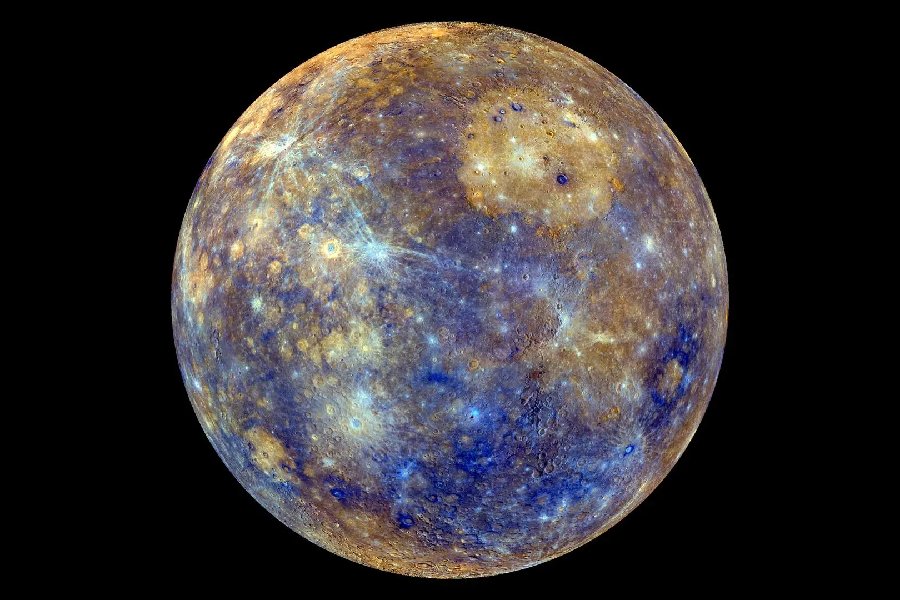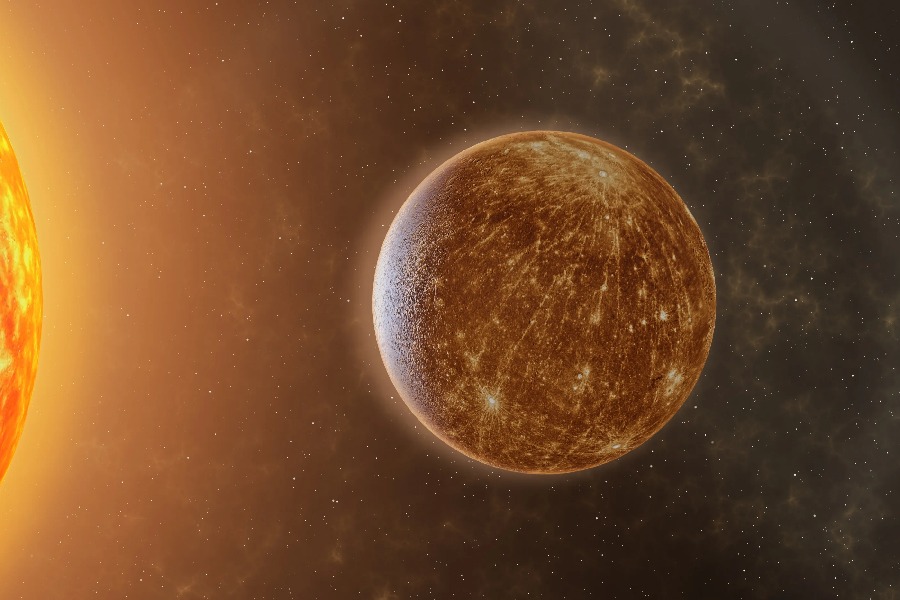The smallest planet in our Solar System, Mercury is also the planet located closest to the Sun. With its lack of atmosphere and proximity to our star, you might expect Mercury to be unbearably hot. But just how hot does this strange little rocky world really get?
In this article, we’ll examine the various factors that influence Mercury’s surface temperature. Without an atmosphere to regulate heat, the surface experiences some dramatic temperature swings. We’ll look at the cold and hot extremes on Mercury and discuss what causes this tiny planet to heat up so intensely at times.
The planet’s slow rotation and proximity to the Sun are other key details in this discussion. By better understanding the conditions of Mercury and how hot is Mercury compare to other planets, we can get a clearer picture of what makes each planet in our Solar System unique.
We’ll look at average temperatures, day and night temperature extremes, and Mercury’s temperature across its atmosphere. Let’s dive in and unravel the mystery of this intensely hot little world!

How Hot Is Mercury?
How hot is Mercury? Mercury, the innermost planet in our Solar System, experiences extreme temperatures due to its proximity to the Sun. During the day, when facing the Sun, its surface can heat up to a scorching 800°F(427°C).
This intense heat is a result of Mercury having little to no atmosphere to trap and retain heat. On the flip side, during the night, when it’s in the shadow, temperatures plummet dramatically to around -290°F (-179°C ).
This extreme temperature difference between day and night on Mercury is one of the most notable features of this rocky planet.
Mercury’s Proximity to the Sun
Orbital characteristics and close distance to the Sun
Mercury has a significantly elliptical orbit. At perihelion, Mercury gets as close as 29 million miles from the Sun. At aphelion, it is 43 million miles away. On average, Mercury is about 36 million miles from the Sun. Being so close to the Sun means Mercury receives a tremendous amount of solar radiation.
This proximity to the Sun results in very high surface temperatures, which leads some to ask – why is Mercury not the hottest planet? The planet’s lack of atmosphere actually prevents heat retention, unlike Venus, which has a dense atmosphere to trap the heat.
So, while Mercury does get extremely hot at times, especially on the side facing the Sun, the lack of atmosphere means it cannot retain that heat well. Overnight, most of the accumulated heat radiates back out into space.
Comparison of Mercury’s orbit to other planets’ orbits
Venus is the planet next closest to the Sun. But its distance ranges from 67-108 million miles. So, Venus is significantly farther from the Sun than Mercury. This greater distance moderates Venus’s temperatures compared to Mercury.
Earth’s distance from the Sun varies between 91-94 million miles. This is over 2.5 times farther than Mercury’s average distance. Earth’s greater distance moderates its temperatures compared to Mercury’s.
Solar Radiation and Intensity on Mercury
Solar fluctuations and variations in radiative heat
Mercury receives intense solar radiation due to its proximity to the sun. Solar intensity ranges from 4.59 to 10.61 times the irradiation on Earth, driving surface temperatures up to extreme levels. Variations in solar intensity occur due to Mercury’s elliptical orbit.
At perihelion, solar irradiance is most intense, while at aphelion, irradiance levels are lowered. However, even at aphelion, the radiation remains strong due to Mercury’s closeness to the Sun. The intensity of the sunlight, combined with Mercury’s lack of atmosphere to retain heat, leads to dramatic temperature swings across the planet’s surface.
Direct absorption of solar energy by Mercury’s surface
Most of the solar energy that hits Mercury is absorbed by its surface. This heats the surface dramatically. Mercury’s lack of atmosphere and insulating air means the surface efficiently converts incoming solar energy to heat. This causes intense surface heating and high temperatures across the planet.
Heat storage and radiation on Mercury’s surface
Properties of Mercury’s surface that allow heat storage
Mercury’s surface has properties that allow it to efficiently store heat from solar irradiation. The high iron content enables heat retention. Mercury’s rocky regolith also readily absorbs and traps heat energy. This allows the surface to remain hot even during nighttime hours.
Process of re-radiation of stored heat energy
Stored heat energy gets slowly released through re-radiation from Mercury’s surface at night. But without an atmosphere, heat escapes rapidly into space. This leads to very cold nighttime temperatures despite heat storage in the regolith.

Temperature Extremes on Mercury
Daytime surface temperatures
Mercury’s sunlit surface reaches scorching temperatures. The planet’s day side averages around 800°F during the day. However, the highest temperatures can exceed over 800°F in some areas.
Near the equator, surface temps may spike over 840°F at local noon when sunlight is most direct. Such extreme heat is driven by Mercury’s intense solar exposure.
NASA’s MESSENGER probe provided temperature measurements from orbit. These showed daytime surface temperatures averaging around 800°F. But only limited measurements of the planet’s sunlit side exist. Estimates from Earth-based infrared studies also help quantify Mercury’s extreme daytime heat.
Drastic temperature differences between day and night
At night, Mercury’s surface undergoes rapid and extreme cooling without sunlight. Temperatures plunge dramatically after sunset. Typical nighttime temperatures are -290°F, a huge swing of over 1000°F from day to night. This extreme variance is driven by the lack of an insulating atmosphere.
The swift transitions and extremes between day and night on Mercury make direct temperature measurements difficult. The rapid changes and cold night temps limit data gathering by probes in orbit. Remote sensing from Earth can help estimate nighttime values. But ground-based observation is restricted by Mercury’s proximity to the Sun.
Surface Conditions and Thermal Environment
Lack of atmosphere and insulation
Mercury has an extremely tenuous atmosphere. It is too thin to provide insulation. This allows heat to readily radiate into space. An insulating atmosphere would moderate temperatures by trapping some heat. But on Mercury, the lack of an atmosphere leads to extreme temperature swings.
Impact on Mercury’s surface heat retention
Without an insulating atmosphere, Mercury’s surface cannot effectively retain heat. This causes very rapid cooling at night as stored heat quickly radiates into space. An atmosphere would slow this cooling but Mercury’s atmosphere is too thin to substantially impact heat loss.
Surface features and thermal variations
Mercury’s surface is composed of varying minerals. Darker materials absorb more sunlight, heating faster. Brighter compositions reflect more heat and energy. This creates local hot and cold regions based on the surface makeup.
Craters that dot Mercury’s surface have different thermal properties. Fresh impact craters absorb more sunlight, heating rapidly. Older craters have smoother, brighter geology. This causes older craters to generally remain cooler than the surrounding younger cratered terrain.
Conclusion
After reviewing the extreme temperatures on Mercury, it’s clear this planet lives up to its fiery reputation. With average highs of 800°F on the Sun-facing side and lows of -290°F in the shadows, Mercury’s surface conditions are some of the most severe in our Solar System.
Exploring how hot is Mercury helps you understand the factors that control the temperature on a planet. It also helps us be more aware of our activities on Earth.
Mercury’s lack of atmosphere and close proximity to the Sun are the main contributors to these scorching temperatures. Although the night side provides a brief respite from the intense heat, the Sun-facing side would remain dangerously hot for any potential human exploration.
The extreme temperature variations across the planet’s surface present major challenges for survival. We hope this exploration has helped convey just how truly extreme the thermal environment is on the smallest planet. Understanding the hostile conditions found throughout the Solar System is key for planning any future space missions.
